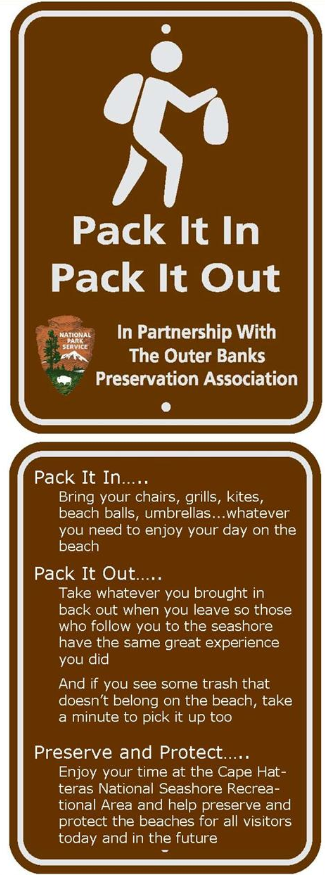By now you probably know 2017 was a banner year for access. Notably, Cape Point was open to ORV access for the entire year and for the first time since before 2008. This was great news for everyone who has been drawn to the seashore over the decades due to the allure of the Point. It was also great news to many newcomers to the seashore who made their first visit to see Shelly Island.
2018 got off to a good start also. Over the winter, Shelly Island was absorbed into the Point and resulted in a huge dry area previously covered by water, and some of the best springtime fishing opportunities in years. Visitors were disappointed on May 19 when the National Park Service announced that the Point was temporarily closed to ORV access due to a colony of least terns that took up occupancy on part of the new land. While the same regulations used in 2017 are still in effect, in 2018 the least terns colony is located closer to the ORV route. The buffer zone required by the Resource Management Plan (revised in accordance with the 2014 legislation) overlaps the ORV route and prevents the use of an ORV corridor like the one used in 2017. At this time, the reopening of the Point to ORV access is dependent on the terns. The most likely scenario is that the colony will remain at or near its present location until after the hatchings fledge, likely in mid to late July.
The events at the Point over the past two years highlight the access benefits of changes in the ORV rule and Resource Management Plan at the seashore which resulted from the federal legislation passed in 2014, as well as opportunities for further improvement in the future.
Three factors allowed Cape Point to remain open throughout 2017. First, the modified resource management plan allowed for the use of ORV only corridors to bypass active nests for the various species under management. The minimum distance between the active nests and the corridor was established based on best available science as required by the legislation. The location of Oystercatcher nests in 2017 were far enough from the ORV trail to accommodate the corridor. Second, the smaller boundaries for some species (such as the piping plover) after hatching but before fledging accommodated the use of an ORV corridor. Thirdly, last year after hatching, the species moved to the west away from the ORV routes rather than interfering with access.
What has occurred in 2018 identifies a major opportunity to improve access in the future. As mentioned earlier, the minimum distance between the nesting birds and the ORV corridor is determined based on best available science. Unfortunately, the science available for colonial water birds, such as the least tern responsible for the 2018 closure, is limited compared to what is available for plovers and oystercatchers. CHAPA has discussed this concern with the National Park Service on several occasions including in recent days. Superintendent Dave Hallac has committed to commission a scientific study working with Gordon Myers, Executive Director of the North Carolina Wildlife Resources Commission to specifically analyze the effect of ORV traffic on nesting activities for colonial water birds to determine if smaller buffers are feasible. The exact timing of the study is still to be determined, but the park service has already begun the process to identify potential participants in the study and to begin at the earliest reasonable date.
The OBPA and our partners work throughout the year to improve visitor experiences in the Seashore. We are in continuous communication with the NPS to manage the challenges with access and develop ideas for future solutions to keep the places we love available for recreational enjoyment. The dynamic nature of our environment and the many factors that have to be considered makes this a difficult task. A solution that worked one year may not work the next. But, as we have demonstrated in the past 18 years, we will not stop trying to tackle these issues and solve problems big and small in the Seashore. For those of you who remember further back than 2016, we have made great improvements in our access. In the summer of 2013, as few as 9.6 miles were available for ORV access in our Seashore. In 2016 and 2017, no less than 25 miles have been available throughout the summer months. Between 2011 and 2015, Cape Point was closed to ORV access by April 9 each year and did not reopen until late August or early September. In 2016, Cape Point did not close until May 11 and reopened on July 27, in 2017 the Point did not close at all. During the same time frame, we have pushed for and received improvements to our ramps and roads, and facilities. We will continue to work with NPS for our visitors, our business community, and our island’s people to keep Cape Hatteras National Seashore Recreational Area a place we can all enjoy.


